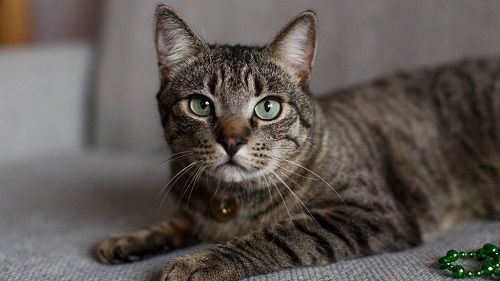Diseases and neurological problems in cats
Diseases and neurological problems in cats
Our little felines can be affected by diseases, pathologies or disorders that affect the central and / or peripheral nervous system, called neurological diseases and that can cause striking, serious and fatal symptoms, especially if they are not diagnosed in time.

There are two main neurological diseases in cats: epilepsy and vestibular syndrome. However, they can also be affected with some frequency by diseases or conditions located in the spinal cord or meninges. The causes of neurological diseases of the cat can be idiopathic, tumor, metabolic, inflammatory, infectious, traumatic, vascular and degenerative mainly, and the diagnosis is based on a physical examination and anamnesis, analytical and biochemical, a comprehensive neurological examination for localization of damage or injury and diagnostic imaging tests, the best being magnetic resonance imaging. Computed tomography, x-ray, and myelography may also be helpful. Treatment will vary according to the disease, requiring medical therapy, support.
Vestibular Syndrome
Cats can present two types of vestibular syndrome: central and peripheral, which in turn can be unilateral or bilateral. First of all, it is important to explain that the vestibular system, located in the inner ear (semicircular canals, saccule, utricle and vestibular nerve), also encompasses a central component associated with structures such as the vestibular nuclei of the myelencephalon and cerebellum and is involved in maintaining the position of the eyes, limbs and trunk with respect to the body and head position at all times.
In a central vestibular syndrome, the structures located in the central nervous system (the vestibular nerve nuclei) are affected, while in the peripheral, the structures located in the inner ear and peripheral nerves are affected. Because it is involved in maintaining posture, if the vestibular system is damaged or altered, this maintenance is hampered, neurological signs appearing in cats such as tilting or tilting the head to one side, ataxia (loss of coordination of movements) and nystagmus (involuntary movement of the eyes laterally in central or peripheral vestibular syndrome, or up and down in the case of central vestibular syndrome).
The treatment of this syndrome will vary depending on the cause that originates it, so there is no specific and generic treatment for all cases. Therefore, it is essential to go to the clinic in case of observing the mentioned symptoms.
Epilepsy
Without a doubt, epilepsy is one of the most common neurological problems in cats. Epilepsy is defined as periodically repeated seizures. Between one attack and another, the cat appears completely normal. In epilepsies there is a sudden activation of a group of neurons that cause overexcitation and agitation of a body area of the cat by activation of a muscle or muscle group (focal epilepsy) or throughout the body when all the muscles are activated (seizure or generalized epileptic seizure).
The causes can be idiopathic or without apparent origin, diseases that affect the brain, vascular disorders or hypoxia, alterations in the liver or kidney (hepatic or uremic encephalopathy) or thiamine deficiency.
Treatment of epilepsy should include drugs such as phenobarbital to reduce the frequency and intensity of seizures, as well as prevent continuous seizures lasting more than 10 minutes, which can cause a rise in body temperature (hyperthermia) that can lead to the death of the feline. In emergency epilepsies, rectal diazepam or intravenous anticonvulsants can be used, among other treatments to stabilize the cat and prevent hyperthermia.

Spinal Diseases
The spinal cord is divided into four functional units: the cervical, thoracic, lumbar, and lumbosacral cord. These units produce combinations of upper and lower motor neuron syndromes in the fore and hind limbs.
Thoracolumbar Or Lumbosacral Spinal Disorders
Clinical signs highly indicative of spinal cord abnormality is paresis (partial motor failure) or paraplegia (total motor failure) of one, several, or all extremities with increased or decreased spinal reflexes, depending on the disease and location of the injury along the spinal cord. For example, if the lumbosacral medulla is affected (the area from the lumbar region to the beginning of the tail), it will produce a paresis of the two hind limbs of the lower motor neuron type, that is, with diminished spinal reflexes such as the patellar in the neurological examination of the cat. , whereas if the affected area is the thoracolumbar area (back from the T2 medullary segment to the lumbar ones), the paresis is of the upper motor neuron, where the reflexes are the opposite or are normal or increased in the hind legs.
Cervical Spinal Disorders
The most serious form occurs when the spinal problem is located in the first spinal segments of the spine, that is, those of the neck and back up to the T2 spinal segment, with paralysis of all four extremities and ataxia. When the lesion is located in the first half (segment C1-C5), an upper motor neuron syndrome occurs in all four extremities, while if it occurs in the C6-T2 segment, a lower motor syndrome occurs in the fore and upper extremities. in the later ones.
The causes are cervical disc disease, cartilaginous embolization, atlantoaxial subluxation or Wobbler syndrome (cervical spondylopathy), among others.



